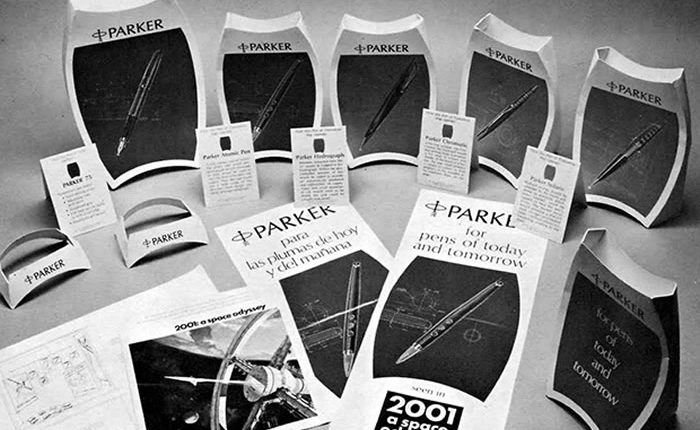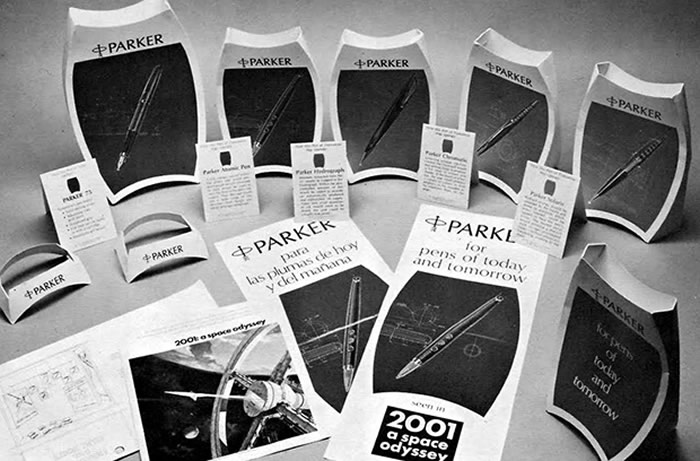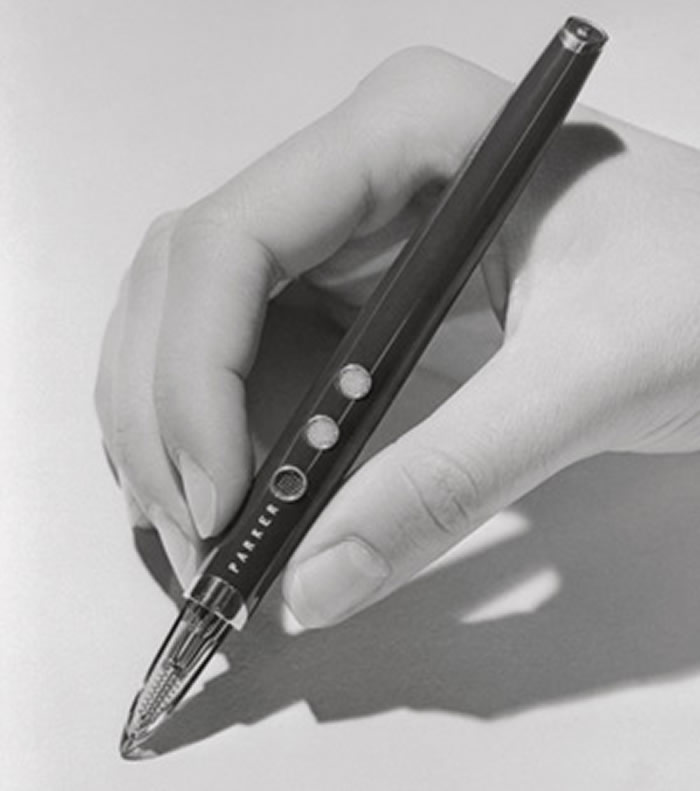Radioactive accessories – from watches to pens
Parker Pen designer Walter Bieger developed a series of “Dream Pens,” in 1958, three of which the company later supplied to Stanley Kubrick to be used as props in 2001: A Space Odyssey. Parker was one of several companies—including Bell Labs, General Electric, General Motors, IBM, and RCA—contacted by Kubrick for samples of what they thought they might have on the market in several decades. When the movie premiered in 1968, the Atomic Pen pictured above was featured floating in microgravity, an effect achieved by sticking the pen to a sheet of glass that was slowly rotated in front of the camera.
The Atomic Pen’s design called for a tiny packet of radioactive isotopes, which would heat the ink to produce a selectable range of line densities. Perhaps understandably, no production units were ever made.
While Parker’s other Dream Pens didn’t make it into the film, the company did use them extensively for promotion in movie theaters, department stores, and supermarkets, displaying the company’s retail products alongside the concepts as “pens of today and tomorrow.”
Like the Atomic Pen, the other concept pens had fanciful functionality. The Hydrograph would absorb nitrogen from the air and chemically combine it, somehow, to make fluid ink. The Chromatic would, at the touch of a button, mix together writing fluids to produce a wide range of colors and shades. The Solaris, powered by tiny solar cells, would burn an impression directly into the paper. And the Robo-Pen could take dictation and then automatically write out the text, with settings on the pen’s keyboard for selecting the style of penmanship, language, margin size, and ink color.
Parker informed customers that it would be at least two generations before the company would be taking any orders, but it promised that these dream pens would be “hot-selling items in space stations at the turn of the century.” Exactly which century, the company didn’t specify.
More information: IEEE Spectrum




Comments are closed, but trackbacks and pingbacks are open.